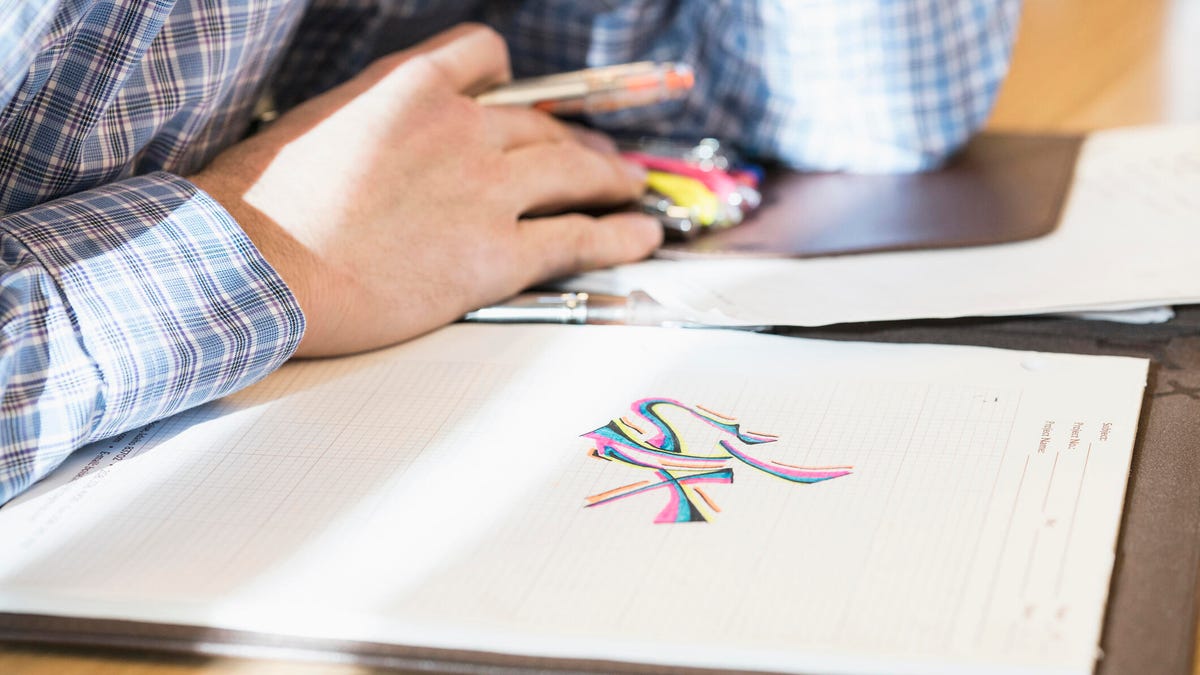Doodling can keep you from zoning out in meetings
The secret memory trick you've been doing all along.

You know those little flowers and 3D boxes that you draw on your paper when a meeting starts to go a little too long? What if I told you that your absent-mindedly doodles can help you pay better attention, improve your concentration and even give you a glimpse into the inner workings of your mind?
Doodling has long been mislabeled as a useless habit that makes it look like you're not paying attention, but numerous studies have suggested its power to improve cognitive function. So, you now have permission to uncap that pen and doodle on.
What is doodling?
When you're doodling, it feels like your pencil has a mind of its own.
First, I wanted to draw out the distinction between doodling and drawing. Doodling is the aimless pen or pencil marks you make while your senses are otherwise occupied. On the other hand, drawing requires conscious thought and the artist's full attention. It's easy to get engrossed in your doodles and start actually drawing, but you'll notice that once you make the switch, you stop paying attention to the person you're supposed to be listening to.
In short, if you're just making random marks like simple flowers or patterns on your paper, it's doodling. If you turn to the person next to you and start sketching a full portrait of their face, then voila, you're drawing.
Can doodling actually improve memory, concentration and focus?
It may be surprising, but multiple theories of cognitive function suggest that the answer is yes.
One case study suggested that self control is like a muscle -- the more you use it, the more tired it gets, and then it needs a break in order to keep going. Sitting still in a meeting and listening to someone talk requires a lot of self control (at least for me), and doodling can provide that small break your mind needs to keep paying attention. Penciling a tiny design may not be as effective as pausing the meeting to stand up and stretch, but a minor distraction to keep your hands busy can allow your self-control to rest for just a moment so that you can carry on listening to all of that important information.
If you're ever stuck in a rut at work, try turning off your mind and putting a pen to paper.
In another widely cited study, two groups listened to the same telephone message listing guests that were either coming to a party or unable to attend. One group doodled by shading in pre-drawn shapes while listening to the voicemail, and remembered 29% more of the names of the guests that could come than the group that didn't doodle. This finding suggested that doodling can provide just enough stimulus for your self-control muscle that you're able to pay better attention to the information being presented to you.
Doodling can also relieve stress by lowering your cortisol levels. If you've ever been anxious about something unrelated during a meeting, you know how hard it is to concentrate when your mind is racing with nervous thoughts. Drawing lines and squiggles provides just enough of an artistic outlet to take the edge off of your anxiety. When your hands are occupied, you can transfer some of that nervous energy to the paper and allow your mind to focus.
Can doodling reveal something deeper about your personality?
What your brain automatically chooses to doodle can illuminate your subconscious mind.
I don't want to get too Freudian on you all, but doodling and free drawing have been used as a potent psychoanalytic tool to reveal your hidden thoughts.
Some scientists have theorized that the brain has two different systems of thought. One is your mind's default mode and is used while you're absentmindedly puttering around. The other is more active and is engaged when you're intentionally focusing on one thing. The default mode of thinking, often called the subconscious, is an extensive area of psychoanalytic study that's long been thought to illuminate fundamental personality traits.
Medical professionals use doodling as a way to access this subconscious thought, since a patient's simple drawings often correlate with the unknown output of their subconscious mind. Psychologists have used doodling as a way to assess one's mental state, including signs of mental illness, as well as the patient's personality, attention span and learning abilities. For example, a psychologist might ask a child to doodle whatever comes to mind, then assess the drawing for signs of short-temperedness, timidness or an active imagination.
This link works because doodling is posited to be pictures of self-expression, and we all know that people show who they really are when they're not pretending to be someone else. Ergo, when doodling and not focusing on anything in particular, your true mind can be revealed.

